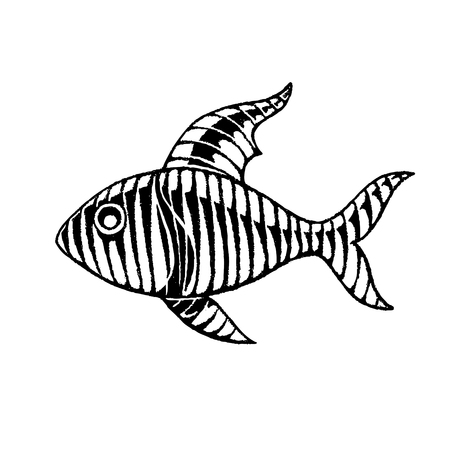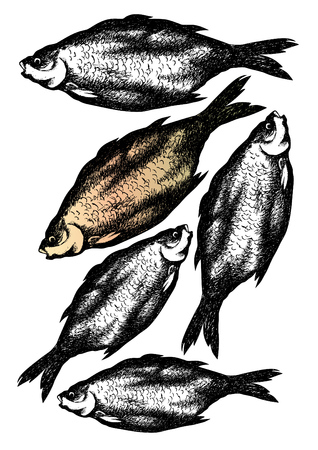Introduction to Scotland’s Legendary Salmon Rivers
When it comes to fly fishing, few destinations rival the allure of Scotland’s famed salmon rivers. The likes of the River Tay, Spey, Dee, and Tweed have been woven into the fabric of British angling heritage for centuries, attracting enthusiasts from all over the globe. Each river not only offers world-class sport but also carries a rich tapestry of history and tradition, with tales of legendary catches and generations of local expertise shaping the waterside culture. Anglers are drawn here by more than just the promise of hard-fighting Atlantic salmon; they come for the breathtaking Highland scenery, the ancient castles perched on riverbanks, and the camaraderie found in bothies and fishing lodges. These rivers are not just fishing venues—they are living links to Scotland’s past and present, making them a true bucket-list experience for any passionate fly fisher.
Essential Gear and Traditional Techniques
When embarking on a fly fishing adventure along Scotland’s iconic salmon rivers, blending in with the local anglers means more than just casting a line – it’s about respecting the heritage and equipping yourself with the right gear. Here’s your in-depth guide to the tackle, clothing, and traditional methods favoured by Scottish experts.
Tackle: What Every Angler Needs
Choosing the correct tackle is crucial for success on Scotland’s premier rivers. Local experts recommend a balanced set-up tailored to the river’s size and salmon run timing. Below is a handy reference:
| Gear Type | Recommended Specs | Local Insight |
|---|---|---|
| Rod | 13-15ft double-handed (Spey) rod | Ideal for distance and control on wide Scottish rivers like the Tay or Spey |
| Reel | Large arbor, strong drag system | Handles powerful Atlantic salmon with ease |
| Line | Floating or intermediate Spey line | Adapt according to water height and season; locals prefer floating lines in spring/summer |
| Leader/Tippet | 12-18lb fluorocarbon or nylon | Clear water calls for finer tippets; heavier leaders for autumn runs |
| Flies | Shrimp patterns, Ally’s Shrimp, Cascade, Stoat’s Tail, Temple Dog tubes | Tied on doubles or tubes; colour varies with river conditions – orange/yellow for peat-stained water, silver/blue for clear days |
Clothing: Dress Like a True Highland Angler
The Scottish climate can be unpredictable, so dressing appropriately ensures comfort and safety throughout your session. Locals prioritise layering and classic tweed attire for both function and tradition:
- Base Layer: Moisture-wicking thermal tops and leggings keep you warm during chilly dawn sessions.
- Tweed Jacket & Breeks: Not only practical against wind but also pays homage to Scotland’s angling heritage.
- Waders: Chest waders (breathable or neoprene) are essential for deeper pools and bank access.
- Hat & Gloves: Flat caps or woollen beanies paired with fingerless gloves offer protection from biting winds.
- Waterproof Shell: A high-quality waterproof jacket is a must for sudden downpours typical of Scottish weather.
- Sunglasses: Polarised lenses cut glare off the water’s surface, improving spotting and safety.
The Time-Honoured Methods: Scottish Fly Fishing Techniques
The art of salmon fishing in Scotland is steeped in tradition. Local anglers favour techniques honed over generations:
The Classic Spey Cast
This elegant roll-cast enables long, controlled presentations even when backcasting room is limited – perfect for tree-lined banks or windy Highlands days.
The Wet Fly Swing (Down-and-Across)
A quintessentially Scottish approach: cast your fly downstream at a 45-degree angle, mend your line upstream, then allow the current to swing your fly across likely holding spots. Keep tension as you anticipate that exhilarating take.
Befriending the Ghillie: Unwritten Rules on the Riverbank
If you want to truly blend in, observe local etiquette – always greet fellow anglers, respect beat boundaries, and heed advice from experienced ghillies who know each pool’s secrets. Remember, patience is a virtue; many Scottish anglers believe perseverance is as important as skill when pursuing wild Atlantic salmon.

3. River Craft: Reading the Water Like a Local
If you want to fish Scotland’s legendary salmon rivers like a true local, understanding river craft is crucial. The Scottish approach blends generations of tradition with a sharp eye for detail, and even seasoned anglers will find much to learn from native wisdom.
Interpreting River Conditions
Scottish rivers are dynamic, with flows and colours changing rapidly after rain. Locals pay close attention to water height using traditional markers such as bridge abutments or exposed rocks—often referred to as “the stick” or “the stone.” A river running with a slight peaty tinge is typically considered prime, especially after a modest spate. Learn to judge when the water clarity and temperature align: salmon are far more likely to take when the river cools following a summer shower or warms up after early spring frosts.
Identifying Prime Holding Spots
Salmon are creatures of habit, favouring specific lies in Scottish rivers season after season. Look for deep pools just below fast runs, or the tails of pools where currents slow and oxygenate the water. Locals often target “the crease”—where main current meets slack water—as well as shaded undercut banks on sunny days. Overhung trees and submerged boulders are classic holding spots, particularly if they provide sanctuary from predators and strong flow.
Unique Scottish River Etiquette
Etiquette is taken seriously on Scottish beats. Always introduce yourself to fellow anglers and ghillies upon arrival. Fishing is generally conducted downstream, casting in turn along the pool—a practice known as “fishing through.” Never overtake another angler unless invited. If you hook a fish, it’s customary to signal so others can reel in and avoid tangles. Respect catch-and-release policies, which are often mandatory, and handle all fish with utmost care before returning them to the river.
Mastering these elements of river craft not only improves your odds but also earns respect among Scotland’s fishing community—a vital asset for those hoping to return year after year.
Prime Seasons, Permits, and Conservation
Understanding the optimal times to cast your line, securing the correct permits, and practising responsible angling are essential for anyone keen to experience fly fishing on Scotland’s renowned salmon rivers. Here’s expert guidance to ensure your adventure aligns with both local traditions and conservation efforts.
Best Times to Fish for Salmon
Timing is everything when it comes to salmon fishing in Scotland. The rivers follow distinct seasonal patterns that influence both fish activity and angler success. Local experts recommend aligning your trip with the following prime periods:
| River | Prime Season | Notable Runs |
|---|---|---|
| Tweed | September – November | Autumn run; high numbers of returning salmon |
| Spey | May – June | Springers and early summer fish; classic Spey casting waters |
| Tay | February – May, September – October | Early spring run; strong autumn returns |
| Dee | March – May | Spring salmon; world-renowned wild runs |
Securing the Right Permits
Unlike some destinations, Scottish rivers are strictly regulated, and a permit (or ‘beat’) is required for each stretch of water. These can be arranged through local estates, angling clubs, or via online platforms dedicated to Scottish fisheries. Early booking is advised during peak seasons. Here’s a quick guide:
- Tweed: Permits from estate offices or FishTweed.co.uk
- Spey: Access beats via FishPal.com
- Tay & Dee: Local tackle shops and club websites provide up-to-date availability.
- ID Required: Bring photo identification when collecting your permit.
- No National Rod Licence Needed: But beat/river-specific permits are mandatory.
Conservation: Protecting Scotland’s Rivers for Future Generations
Sustainable fishing is at the heart of Scotland’s angling culture. Local experts urge all visitors to respect catch-and-release guidelines, handle fish with care, and use barbless hooks where required. Participation in river clean-up days and supporting local conservation charities such as the Atlantic Salmon Trust help safeguard these legendary waters.
Responsible Practices Checklist:
- C&R Policy: Practise catch-and-release on all but designated keep days.
- Tackle Choices: Use knotless landing nets and wet hands when handling fish.
- Litter-Free Fishing: Take all litter home – leave no trace by the riverbank.
- Disease Prevention: Disinfect waders and equipment between rivers to prevent invasive species spread.
- Respect Local Guidance: Always follow gillies’ advice and posted rules on each beat.
The combination of strategic timing, proper permitting, and mindful stewardship ensures that Scotland’s premier salmon rivers remain a world-class destination for generations of fly anglers to come.
5. Tales from the Riverbank: Wisdom from Scottish Ghillies
There’s no substitute for local knowledge when fly fishing Scotland’s famed salmon rivers. The ghillies—seasoned river guides and guardians of tradition—offer a wealth of insights gleaned from decades on the water. Their tales are more than just stories; they are blueprints for success tailored to each unique stretch of river.
The Dee: Reading Water and Respecting Tradition
On the River Dee, veteran ghillie Hamish McAllister swears by the art of reading the water before making a cast. “Salmon aren’t always where you expect,” he notes. “Look for subtle changes in current, pockets behind rocks, and seams at the edge of pools.” He recommends starting with classic Dee patterns like the Silver Stoat or Park Shrimp, but emphasises that presentation trumps pattern. A slow, steady retrieve often proves most effective in these clear waters.
The Tay: Timing is Everything
For those fishing the mighty Tay, ghillie Fiona MacGregor highlights timing as paramount. “The spring run can be electric, but patience pays,” she says. Early mornings or late evenings tend to produce the best sport, especially after a fresh spate. MacGregor urges anglers to cover water methodically, working every lie with confidence and keeping flies like the Ally’s Shrimp or Cascade in rotation.
The Spey: Light Touch and Local Flies
On the River Spey, legendary for its swift currents, ghillie Callum Fraser stresses a light touch. “A delicate approach preserves your chances,” he advises. He shares an anecdote about a visiting angler who switched to a smaller, sparsely dressed Spey fly and landed his personal best after a fruitless morning. Fraser also advocates mastering the traditional double Spey cast for precise placement across tricky runs.
Adaptability: The Mark of Experience
Across all rivers, seasoned ghillies agree that adaptability is key. Changing tactics—whether altering fly size, adjusting depth with sink tips, or tweaking casting angles—often spells the difference between a blank and a banner day. Listening to your ghillie’s observations about shifting conditions or recent catches can unlock opportunities that outsiders might miss.
A Final Word
Ultimately, these rivers reward those who blend respect for tradition with open-minded strategy. As one Ballogie Estate ghillie puts it: “Let the river teach you something new every session.” Success on Scotland’s premier salmon rivers is found not only in technical mastery but also in listening carefully—to both the water and those who know it best.
6. Making the Most of Your Visit
To truly embrace your Scottish angling adventure, it’s essential to round out your fly fishing experience with a taste of local culture and hospitality. After a rewarding day on the riverbanks of the Tay, Spey, or Dee, consider booking your stay in one of Scotland’s renowned country inns or historic guesthouses. Places like Ballathie House near the River Tay or Craigellachie Hotel by the Spey offer not only comfortable lodgings but also genuine Highland charm and personal service, often with tales from fellow anglers exchanged around the fire.
Food and drink are at the heart of Scottish hospitality. Don’t miss out on sampling locally smoked salmon—often cured on-site—or hearty game dishes such as venison stew. Pair these traditional meals with a dram of single malt whisky from a nearby distillery; many riverside towns are within easy reach of world-famous whisky trails, including those in Speyside and Perthshire. Whisky tastings and distillery tours make for an excellent post-fishing diversion, allowing you to savour the region’s rich heritage.
Beyond the rivers, immerse yourself in Scotland’s vibrant culture. Historic castles such as Blair Castle or Balmoral are well worth a visit, providing insight into centuries-old traditions and breathtaking architecture. For those keen on local crafts, pop into village shops for handwoven tweeds or explore artisan markets for unique souvenirs. If your visit coincides with summer, keep an eye out for Highland Games—spectacular events featuring traditional sports, music, and dance that encapsulate the spirit of Scotland.
By combining expert fly fishing with authentic accommodation, culinary delights, and unforgettable cultural experiences, you’ll ensure that your trip to Scotland’s premier salmon rivers is both thrilling on the water and deeply enriching off it.

